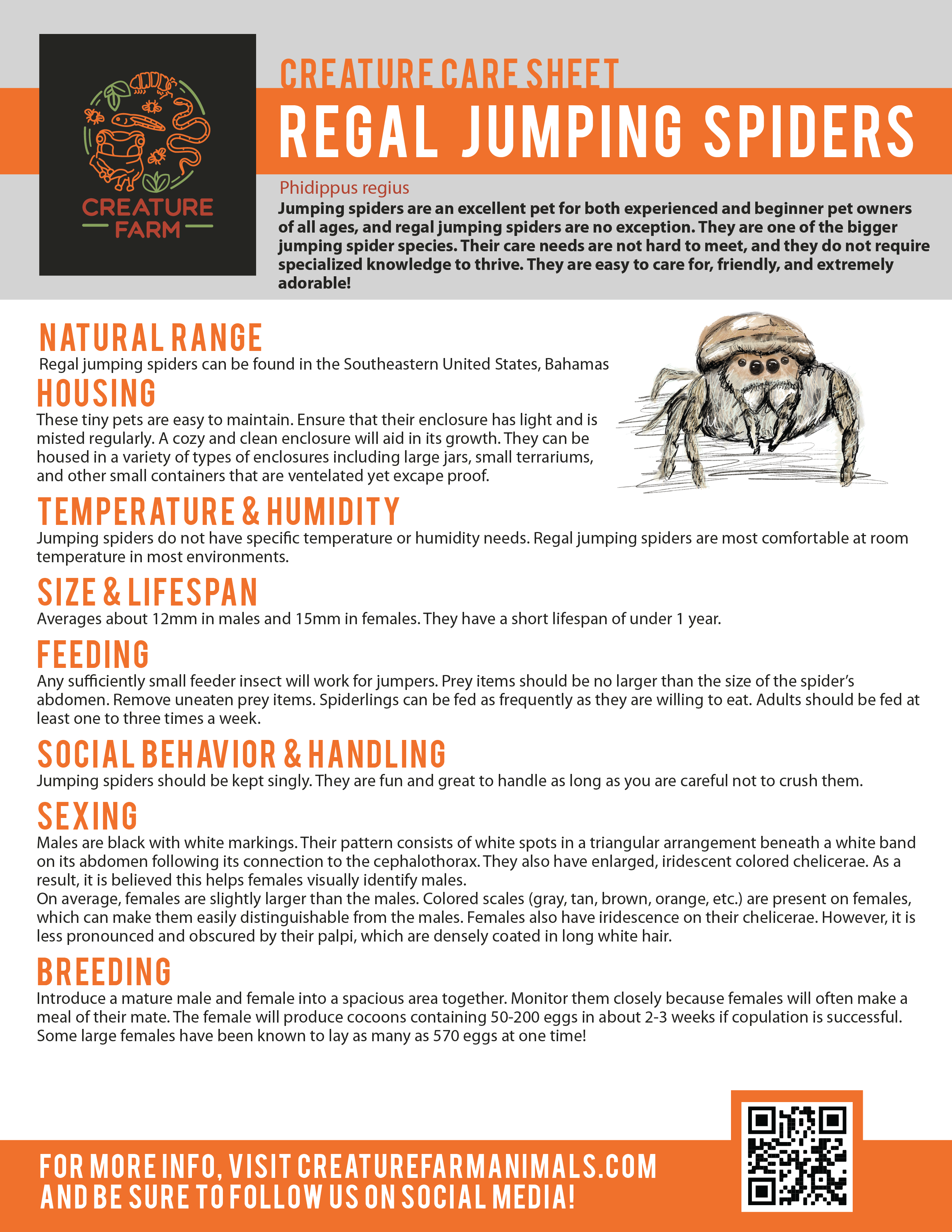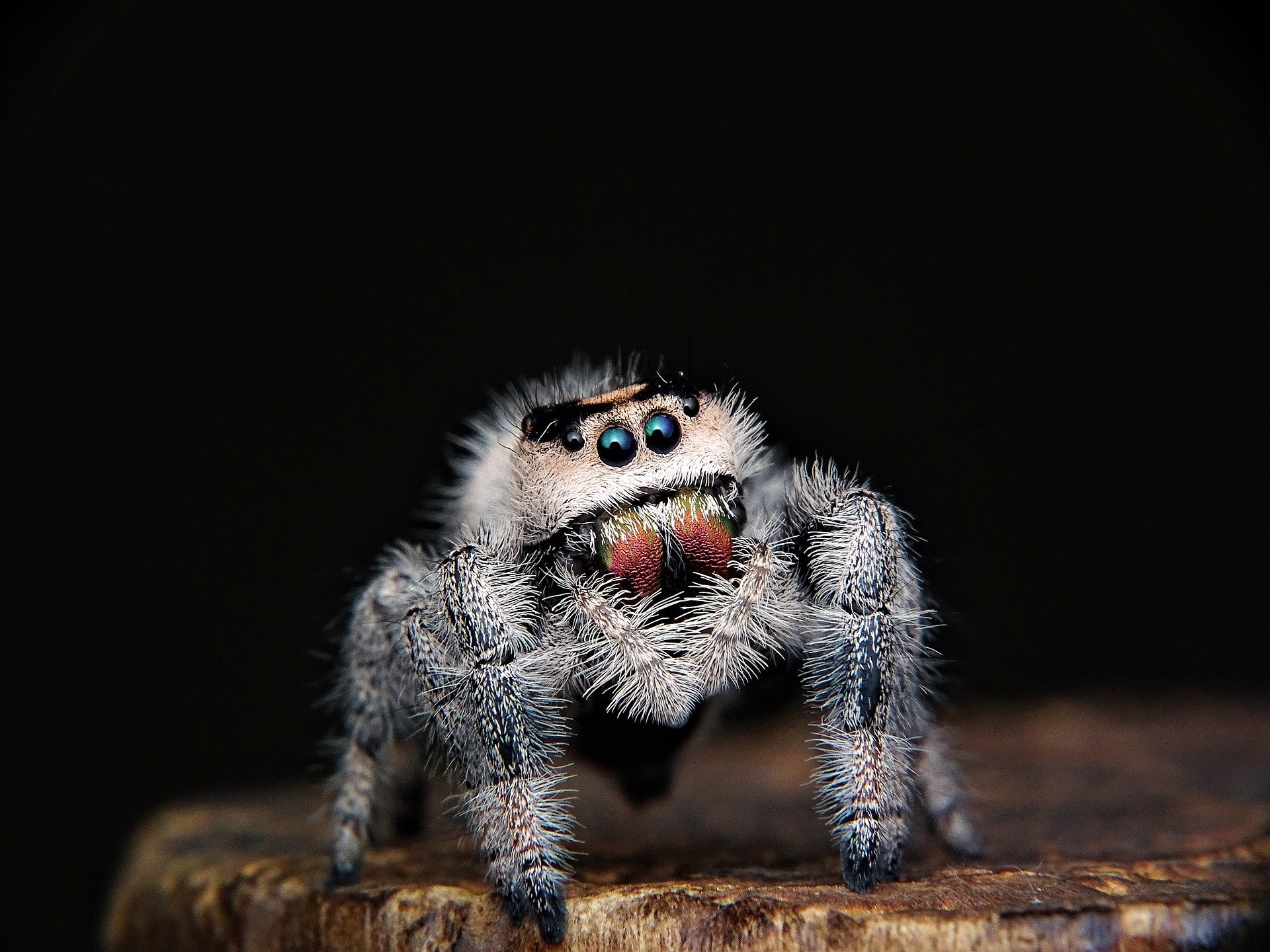CARE GUIDE
Phidippus regius
Jumping spiders are an excellent pet for both experienced and beginner pet owners of all ages, and regal jumping spiders are no exception. They are one of the bigger jumping spider species. Their care needs are not hard to meet, and they do not require specialized knowledge to thrive. They are easy to care for, friendly, and extremely adorable!
NATURAL RANGE
Regal jumping spiders can be found in the Southeastern United States, Bahamas
HOUSING
These tiny pets are easy to maintain. Ensure that their enclosure has light and is misted regularly. A cozy and clean enclosure will aid in its growth. They can be housed in a variety of types of enclosures including large jars, small terrariums, and other small containers that are ventelated yet excape proof.
TEMPERATURE & HUMIDITY
Regal jumping spiders are most comfortable at room temperature in most environments. They do best with a fluctuating humidity gradient, with a boost and drop daily. This can be achieved by simply misting their enclosure and then allowing it to dry out.
SIZE & LIFESPAN
Averages about 12mm in males and 15mm in females. They have a short lifespan of under 1 year.
FEEDING
Any sufficiently small feeder insect will work for jumpers. Prey items should be no larger than the size of the spider’s abdomen. Remove uneaten prey items. Spiderlings can be fed as frequently as they are willing to eat. Adults should be fed at least one to three times a week.
SOCIAL BEHAVIOR
Jumping spiders should be kept singly. They are fun and great to handle as long as you are careful not to crush them.
SEXING
Males are black with white markings. Their pattern consists of white spots in a triangular arrangement beneath a white band on its abdomen following its connection to the cephalothorax. They also have enlarged, iridescent colored chelicerae. As a result, it is believed this helps females visually identify males.
On average, females are slightly larger than the males. Colored scales (gray, tan, brown, orange, etc.) are present on females, which can make them easily distinguishable from the males. Females also have iridescence on their chelicerae. However, it is less pronounced and obscured by their palpi, which are densely coated in long white hair.
BREEDING
Introduce a mature male and female into a spacious area together. Monitor them closely because females will often make a meal of their mate. The female will produce cocoons containing 50-200 eggs in about 2-3 weeks if copulation is successful. Some large females have been known to lay as many as 570 eggs at one time!


